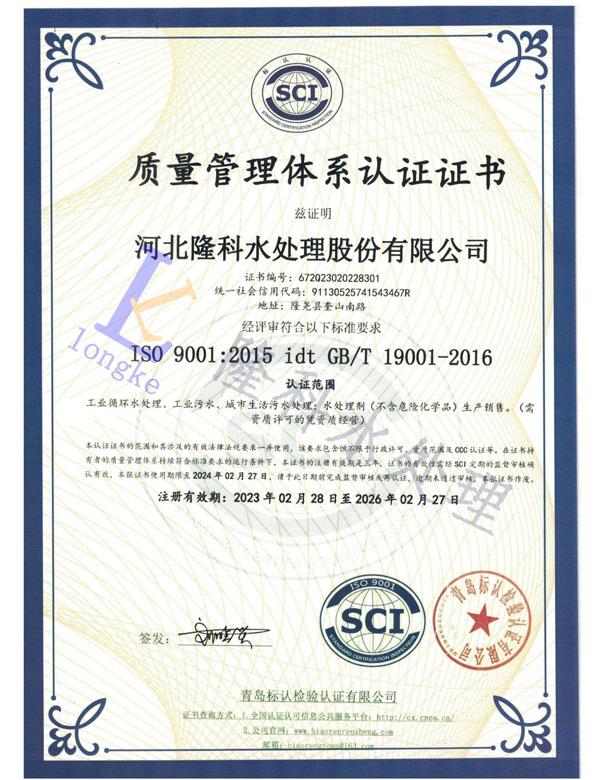flocculation chemicals
Understanding Flocculation Chemicals Their Role and Importance
Flocculation is a crucial process in various industrial and environmental applications, primarily used in water treatment, wastewater management, and the production of certain food and beverage items. At the heart of this process lie flocculation chemicals, which facilitate the aggregation of fine particles into larger flocs, making them easier to remove from liquids. This article explores the types of flocculation chemicals, their mechanisms of action, and their significance in different sectors.
What Are Flocculation Chemicals?
Flocculation chemicals can be broadly categorized into two primary groups inorganic flocculants and organic flocculants.
1. Inorganic Flocculants These include compounds such as alum (aluminum sulfate), ferric chloride, and calcium hydroxide. Inorganic flocculants are often preferred for their cost-effectiveness and efficiency in bridging particles together. They work by neutralizing the electrostatic charges that keep particles suspended in a colloidal state. Once these charges are neutralized, particles can come together to form larger aggregates or flocs, which can precipitate out of the solution.
2. Organic Flocculants Common organic flocculants include polyacrylamides and natural polymers like starch and guar gum. These substances have high molecular weights and can facilitate floc formation by forming a network that captures smaller particles. Organic flocculants tend to be more efficient at lower dosages compared to inorganic options and are often chosen for specialized applications where fine particle removal is necessary.
Mechanism of Action
The effectiveness of flocculation chemicals can be attributed to their ability to alter the physical properties of the colloidal suspension. Flocculants work by bridging the gaps between particles or by increasing the particle size through entrapment effects. Here’s how they typically function
1. Charge Neutralization As particles in suspension often carry a negative charge, flocculants help neutralize these charges, allowing particles to come closer together.
flocculation chemicals

3. Settling and Removal The larger flocs can then settle at the bottom of the container due to gravity, allowing for easier removal from the water or solution.
Importance in Various Industries
Flocculation chemicals play a vital role in several industries
- Water Treatment In municipal water treatment plants, flocculants are essential for clarifying drinking water. They help remove suspended solids, bacteria, and other contaminants, ensuring cleaner, safer water for consumption.
- Wastewater Management In industrial settings, flocculation chemicals assist in the treatment of wastewater, leading to the removal of pollutants. This is crucial for meeting environmental regulations and preventing water pollution.
- Food and Beverage Production In the production of beverages like beer and juice, flocculants aid in removing unwanted particles, ensuring clarity and stability in the final product.
- Mining In the mining industry, flocculants are employed to separate valuable minerals from waste materials, enhancing the efficiency of mineral extraction processes.
Conclusion
In conclusion, flocculation chemicals are essential tools in various processes, from purifying drinking water to improving industrial wastewater treatment and enhancing food products. Understanding the types and mechanisms of flocculants can help industries choose the most effective options for their specific needs, ultimately leading to better environmental management and product quality. With growing concerns about water scarcity and environmental sustainability, the importance of efficient flocculation processes is more crucial than ever.
-
Water Treatment with Flocculant Water TreatmentNewsJun.12,2025
-
Polymaleic AnhydrideNewsJun.12,2025
-
Polyaspartic AcidNewsJun.12,2025
-
Enhance Industrial Processes with IsothiazolinonesNewsJun.12,2025
-
Enhance Industrial Processes with PBTCA SolutionsNewsJun.12,2025
-
Dodecyldimethylbenzylammonium Chloride SolutionsNewsJun.12,2025





